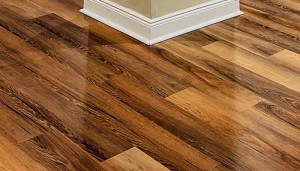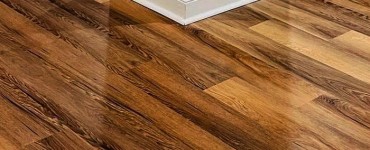If you’re thinking about swapping out your old carpet for a new vinyl floor, there are a few things you need to know first. When it comes to flooring, vinyl is a popular and affordable option that many homeowners opt for. There are many reasons why vinyl may be a good choice for your home and this article will discuss everything about vinyl flooring.
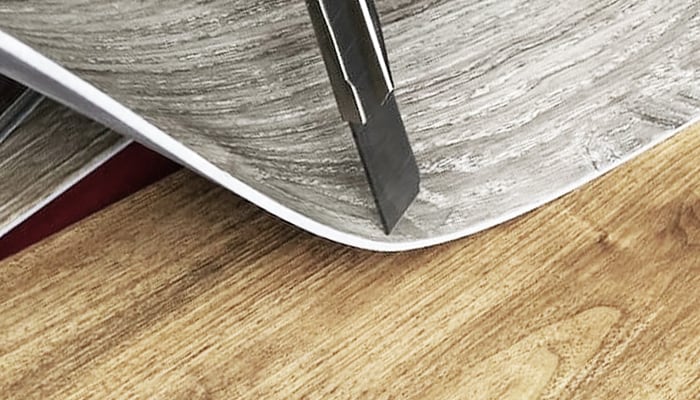
What Is Vinyl Flooring
Vinyl flooring is a synthetic material made from polyvinyl chloride (PVC) and other additives. It can be installed as a sheet or a tile and is available in a wide range of colors and finishes. It is a popular choice for kitchens, bathrooms, and other high-traffic areas.
Vinyl flooring is usually cheaper than other types of flooring, and it is also easier to care for. Some people like vinyl flooring because it has a unique look, and it can be easily cleaned.
History of Vinyl Flooring
The history of vinyl flooring can be traced back to the early 1900s when it was first used as a coating for metal. It wasn’t until the 1930s that vinyl flooring was used as a residential flooring option. Vinyl flooring is typically made from polyvinyl chloride (PVC) and is a popular choice because it is affordable, durable, and easy to clean.
Types of Vinyl Flooring
Vinyl flooring is a popular choice for many people because it is affordable, easy to clean, and has a variety of colors and styles to choose from. There are several types of vinyl flooring, each with its own benefits. Here are the four most common types:
Luxury Vinyl Planks
Luxury vinyl planks are a newer type of flooring that is made to look like hardwood. It is made of multiple layers of vinyl, and is designed to be waterproof and durable. Luxury vinyl planks are a popular choice for kitchens and bathrooms, as they are easy to clean and resistant to moisture.
Luxury Vinyl Tile
Luxury Vinyl Tile (LVT) is a flooring product that has been growing in popularity in recent years. It is made of vinyl, but looks and feels like real wood or stone. It is durable and easy to clean, making it a good choice for busy households. LVT comes in a wide variety of styles, so you can find one that will fit your home’s aesthetic.
Sheet Vinyl
Sheet vinyl is a synthetic flooring material made from polyvinyl chloride (PVC) resin and other additives. It is produced in rolls of various widths and lengths, and can be installed either by a professional installer or by the do-it-yourselfer. Sheet vinyl is durable, easy to clean, and relatively inexpensive. It is available in a wide range of colors and patterns, including wood grain and marbleized designs.
Vinyl Composite Tile
Vinyl Composite Tile (VCT) is a manufactured product made from a blend of natural and synthetic materials. The main component is vinyl, which gives the tile its durability and water resistance. Other ingredients may include limestone, clay, or other minerals to add strength and color. VCT is an affordable flooring option that is easy to install and maintain. It can be used in both residential and commercial settings and comes in a variety of colors and styles.
Pros and Cons of Vinyl Flooring
Vinyl flooring is a popular choice for many homeowners because of its many benefits. Vinyl flooring is very durable and can last several years without requiring any maintenance. Vinyl flooring is also easy to clean, which is an important consideration for some homeowners. Another reason to consider vinyl flooring is the price. Vinyl flooring is affordable compared to other options, such as wood or tile floors.
However, there are a few cons to consider before making the decision. First, vinyl flooring can easily be damaged by foot traffic and spills, which means that it may need to be replaced more frequently than other types of floors.
Additionally, vinyl floors are not as heat resistant as other types of floors, so they may become uncomfortable in warm climates. Finally, vinyl flooring does not absorb sound well, which can make it difficult to listen to music or watch TV in the bedroom or living room.
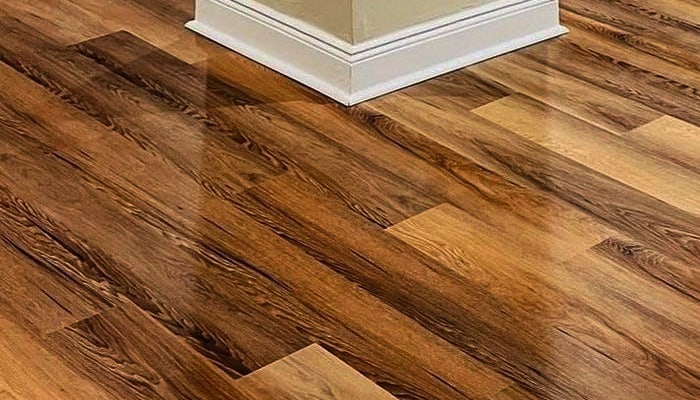
How to Install Vinyl Flooring
Are you looking to add some new flooring to your home but are unsure of what material to choose? Vinyl is a great option because it’s affordable, easy to install, and comes in many different colors and patterns. Here are the steps on how to install vinyl flooring:
Measure the Room
First, measure the room to be covered to ensure that the flooring will fit. You’ll also want to make sure that the room is well-ventilated and has enough space for installation.
Remove the Trim Moldings
First and foremost, remove the trim moldings around the flooring. You can do this by using a knife or a seam ripper. Once the trim is removed, you can start to smoothen the subfloor.
Have the Subfloor Smooth
A good way to avoid bumps and divots is to use a sandpaper or power buffer before laying down the vinyl. This will also make cleanup much easier! Clean the entire surface using a wet mop and bucket, clean all of the dirt, dust and debris off of the subfloor. Make sure to get under cabinets and furniture as well!
Cut the Vinyl Flooring
After you have smoothen floor, you will need to cut the vinyl flooring to fit your space. You can do this by using a ruler and cutting the vinyl tiles as needed.
Attach the Flooring to The Adhesive
First attaches the adhesive to the surface, then positions the vinyl flooring over it. Then press down the vinyl and sticks it to the adhesive.
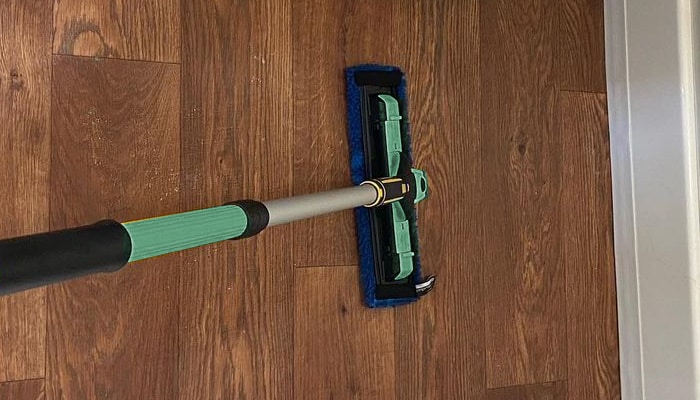
How to Maintain Vinyl Flooring
Vinyl flooring is a popular choice for many homeowners because it is easy to clean, durable, and looks great. However, like any flooring, vinyl needs to be maintained regularly in order to keep it looking new. Here are five tips for keeping vinyl floors looking great:
Sweep Regularly to Remove Debris
Sweep regularly to remove debris. Vinyl floors can easily become cluttered with dirt, dust, and stains if they aren’t cleaned regularly. Sweep the floor to remove all the accumulated debris every day or once a week at least. This will help keep the floor looking clean and free of damage.
Mop with A Damp Cloth and Mild Detergent
Mop with a damp cloth and mild detergent once a week. This will help remove dirt, dust and residue buildup.
Use a Vinyl Floor Cleaner to Remove Tough Stains
One way to keep your vinyl floor looking and feeling its best is to use a vinyl floor cleaner to remove tough stains. Use a diluted solution of the cleaner and water to clean the surface. Work in small sections, rinsing with clean water between applications.
Reapply a Sealant Every 6-12 Months, Depending on Traffic
It is important to remember that a sealant must be reapplied every 6-12 months, depending on how much traffic the floor sees. When it comes to Vinyl Floor Coating, a sealant is the best way to protect your floor from water and dirt build-up, which will over time cause severe damage. Additionally, applying a sealant can also prolong the life of your floor by preventing wear and tear.
Invest in A Good Quality Vacuum Cleaner with A Brush Attachment
A vacuum with a brush attachment will help remove debris from the surface of the vinyl flooring more effectively than a regular vacuum cleaner.
Conclusion
In conclusion, vinyl flooring is a great option for flooring because it is durable, waterproof, and easy to clean. It is also a more affordable option than other types of flooring. If you are considering installing vinyl flooring in your home, be sure to weigh the pros and cons and consult with a professional before making a decision.



